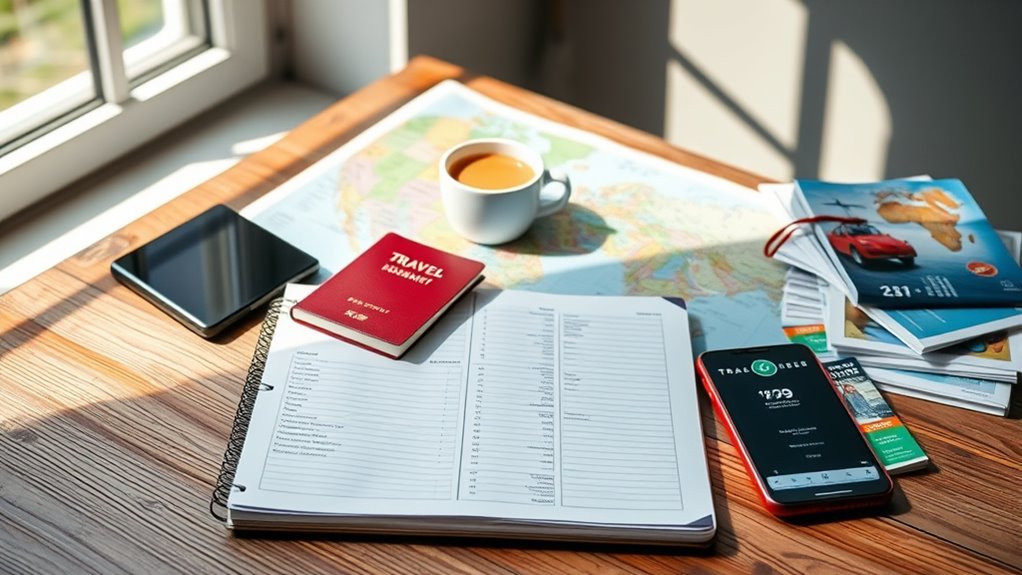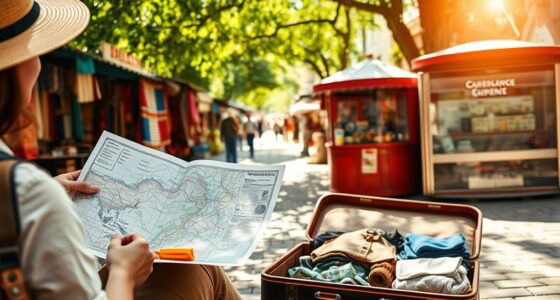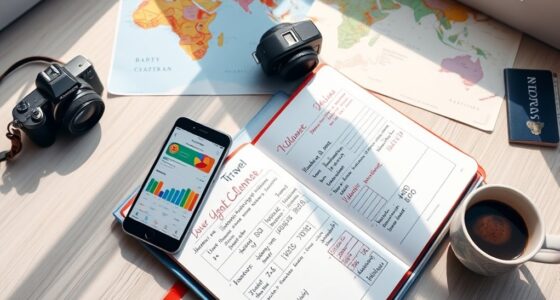When you’re planning your trip, don’t forget to budget for transportation, lodging, food, entertainment, and those sneaky little incidentals. Flights can hit your wallet hard, and where you crash for the night can make or break your bank. Eating doesn’t have to break the bank if you hit up local markets. And let’s not forget those unexpected costs that pop up like surprise fees—yikes! Stick around to get more tips on staying within your budget!
At a Glance
- Transportation Costs: Budget for airfare, car rentals, gas, and local transport, as these can significantly impact your travel budget.
- Lodging Expenses: Accommodations can vary widely; booking in advance often leads to better rates and savings.
- Food and Dining Expenses: Allocate around 24-25% of your budget for meals; mix dining options to save money.
- Entertainment and Activities: Set aside about 11% of your budget for activities; look for discounts and free attractions.
- Incidentals and Local Transportation: Expect additional costs for tips, parking, and souvenirs; plan for an average of $202 for local transport.
Transportation Costs
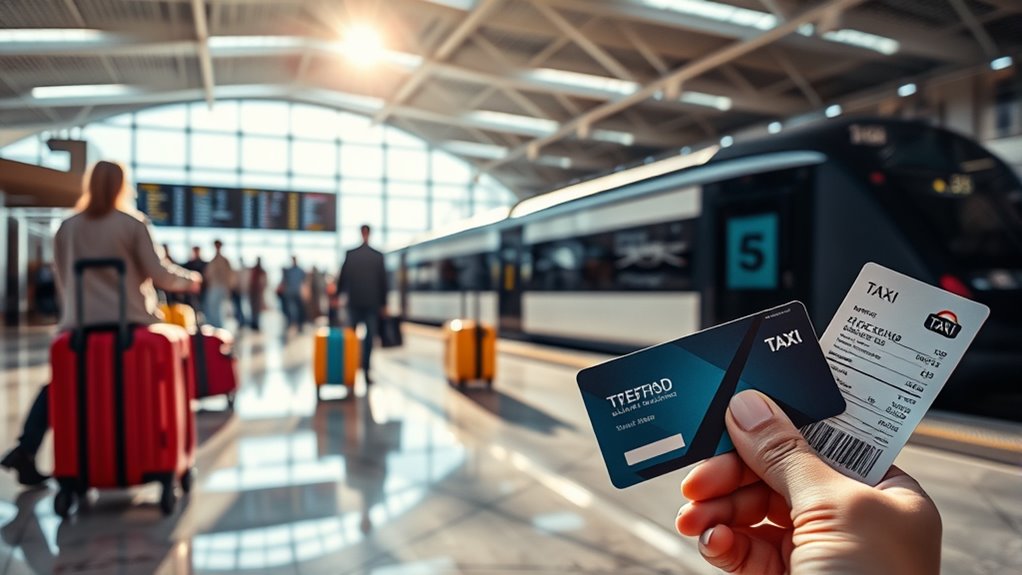
When you think about planning your trip, it’s hard to ignore that transportation costs can really add up, right? Airfare trends show that flying can drain your wallet fast! Domestic flights average around $290 to $378, and international ones? Ouch!
Ground transportation isn’t much better. Renting a car can run you $42 to $84 a day, plus gas prices that have a mind of their own. Don’t forget about taxis and parking fees! To save on costs, consider booking flights during optimal days to find cheaper fares.
Lodging Expenses
Lodging can be a big chunk of your travel budget, so it’s smart to keep an eye on those expenses!
Whether you’re into fancy hotels or cozy hostels, the key is smart hotel booking. Prices can vary like crazy, depending on where you’re and what season it is. You might snag a bargain on a beach bungalow or splurge on a swanky city penthouse. For instance, consider destinations like Albania that offer stunning accommodations at a fraction of the cost of other European destinations.
Planning ahead often means better rates, so don’t just wing it! Trust me, you’ll want to save those extra bucks for adventures, not just a place to crash.
Planning ahead can lead to great savings, so don’t leave your lodging to chance! Save those bucks for adventures!
Happy travels, friend!
Food and Dining Expenses
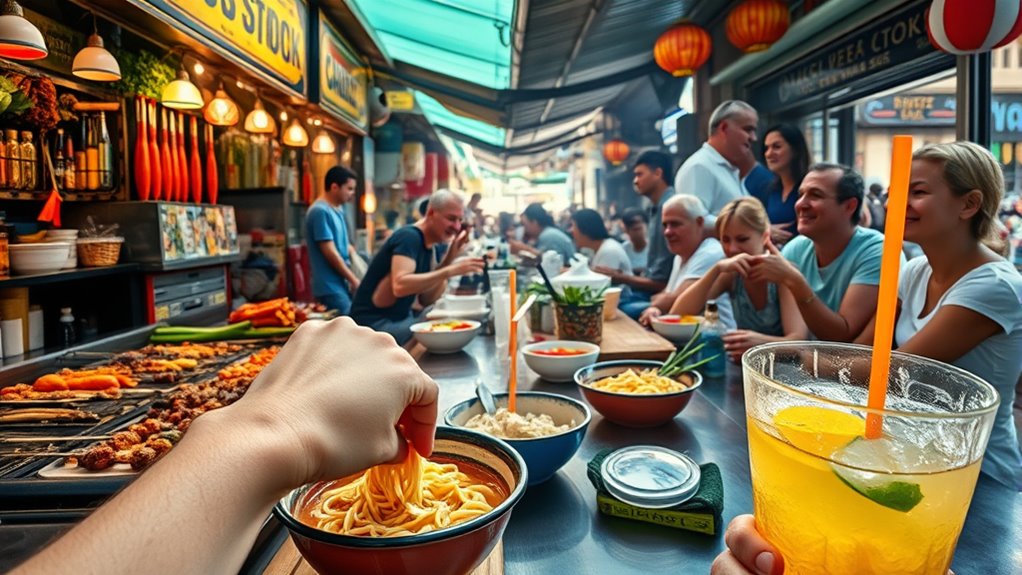
Food can take up a big slice of your travel budget, often around 24-25% for domestic trips!
Imagine munching on local favorites while soaking in the sights. To keep those costs in check, meal planning is your best friend.
Consider mixing up your dining options—try street food one day and a cozy café the next. You’ll get a taste of everything without breaking the bank!
Plus, don’t forget that grocery shopping can be a fun adventure, too. Who knew that snacks from a local market could be an essential part of your travel experience? Also, consider visiting budget-friendly destinations like Colorado Springs where you can enjoy affordable meals while exploring beautiful outdoor attractions.
Happy eating!
Entertainment and Activities
After you’ve filled your belly with delicious local eats, it’s time to explore the fun side of your trip—entertainment and activities!
Think about the tour options available; from thrilling city tours to serene nature hikes, there’s something for everyone. Don’t forget to snag those activity discounts—trust me, your wallet will thank you!
Whether you’re catching a local show or visiting a quirky museum, budgeting around 11% of your trip for fun is smart.
Budgeting about 11% of your trip for fun activities ensures unforgettable adventures without overspending!
In addition, consider affordable adventures like those found in Utah’s national parks, which offer breathtaking experiences without breaking the bank.
And hey, some attractions are free! So, grab your friends, plunge into the adventure, and make unforgettable memories without breaking the bank!
Incidentals and Local Transportation
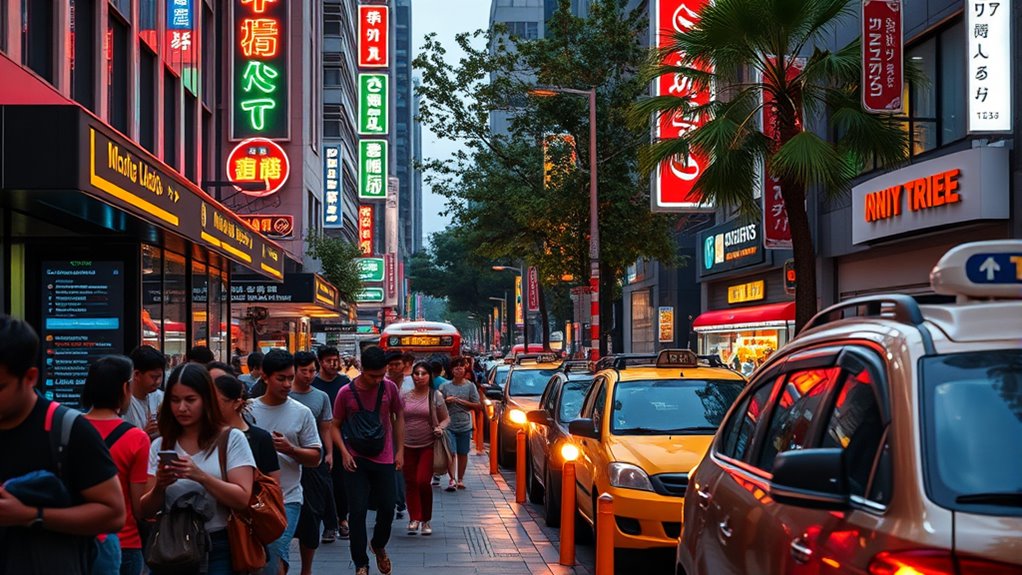
When you’re planning a trip, don’t forget about those sneaky little expenses that can add up—like incidentals and local transportation!
You might think you’ve got your budget nailed down, but what about those taxis and rideshares? Local transport can average around $202 for a trip, so keep that in mind.
Parking fees? They can hit you with about $30 a day!
Budgeting tips? Always set aside a little extra for tips, tolls, or even that last-minute souvenir. Also, consider budgeting for travel insurance options, as they can provide peace of mind during your journey.
It’s all part of the adventure, and those small costs can’t stop your free-spirited travels! Happy exploring!
Conclusion
So, as you plunge into your travel planning, remember those five key expenses—transportation, lodging, food, entertainment, and those sneaky incidentals. Did you know that travelers on average spend around $1,200 on a week-long trip? Yikes! But hey, with a little budgeting magic, you can enjoy your adventure without breaking the bank. Just think of it as a treasure hunt, where every dollar saved is a step closer to your next epic experience. Happy travels, friend!
